
Present Continuous Negative Examples Present Continuous Examples Tense Ppt Prefixword
Liveworksheets transforms your traditional printable worksheets into self-correcting interactive exercises that the students can do online and send to the teacher.. Present Continuous-Negative. School subject: English as a Second Language (ESL) (1061958) Main content: Present continuous (2013223) Negative Forms. Other contents:.

Make the Present Continuous (this exercise includes positive, negative, Yes/No, and Whquestion
Present Continuous — Positive and Negative. Put the verb into the correct form, positive or negative. Use Present Continuous. Show example. 1. Children, please, don't make so much noise. Your father. (sleep) is sleeping. 2.
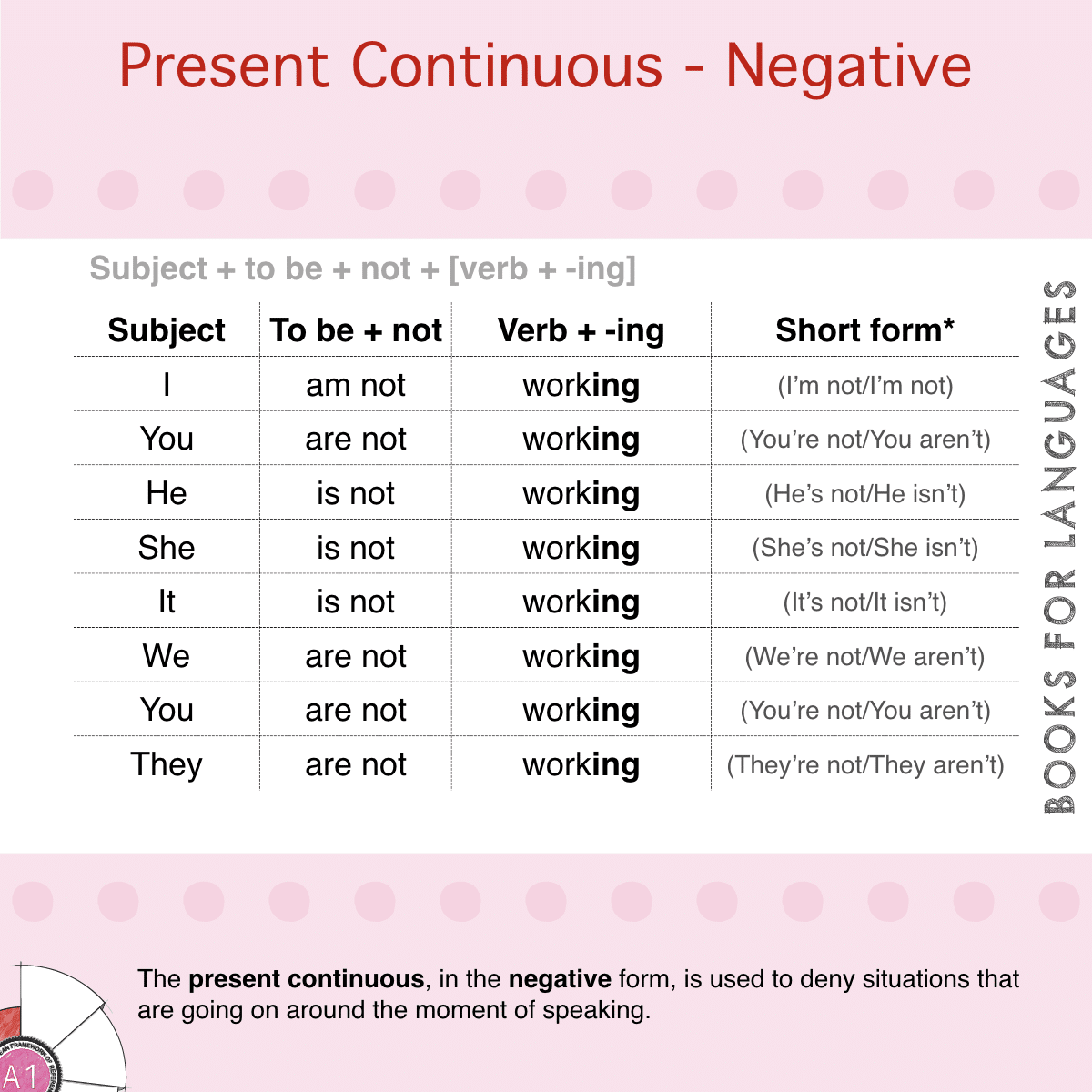
Present Continuous Negative
The present continuous, in the negative form, is used to deny situations that are going on around the moment of speaking.. When we use the present continuous in its negative form, we start with the subject followed by the verb to be and not and a verb that ends with -ing.. For example: — "He isn't working on an important project today." = We use the present continuous to express an.
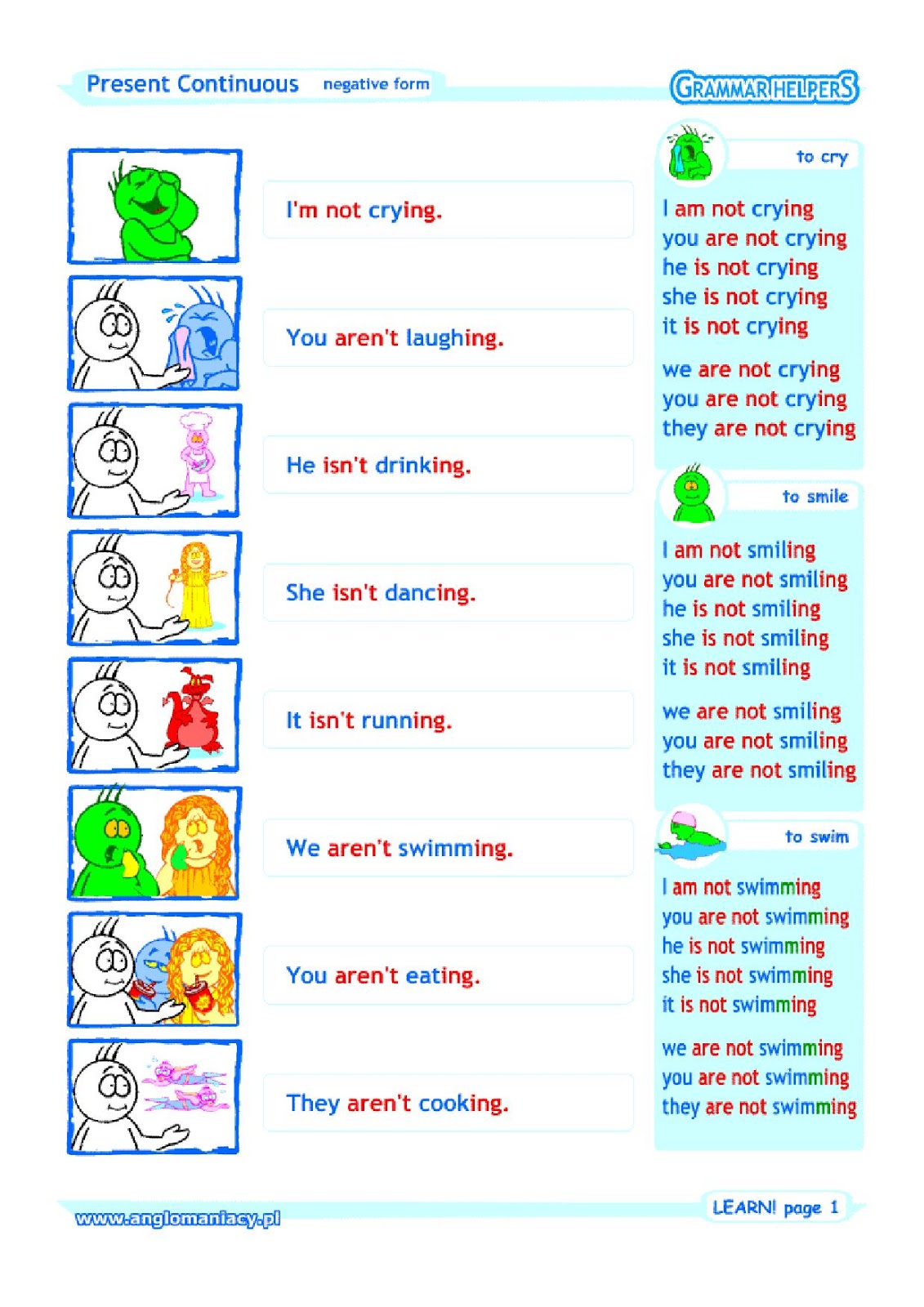
ANGLÈS 3r CICLE PRESENT CONTINUOUS NEGATIVE FORM
Negative Exercises Present simple and present continuous negative - exercise 5 Present simple and present continuous negative. Does Steve work at night? No, he does not work at night. Check test Are all your friends sitting next to you? No, they next to me. They are at the back. Does your father get up at nine every day?

Present Continuous — Positive and Negative sentences ESL Worksheet English grammar, Present
In the present continuous tense, negative forms are made using NOT, and question forms are made by changing the word order of the sentence. This page explains the rules. 1. Forming a negative. Negatives in the present continuous are formed by adding not or n't after the verb BE: Positive sentence. Negative sentence.
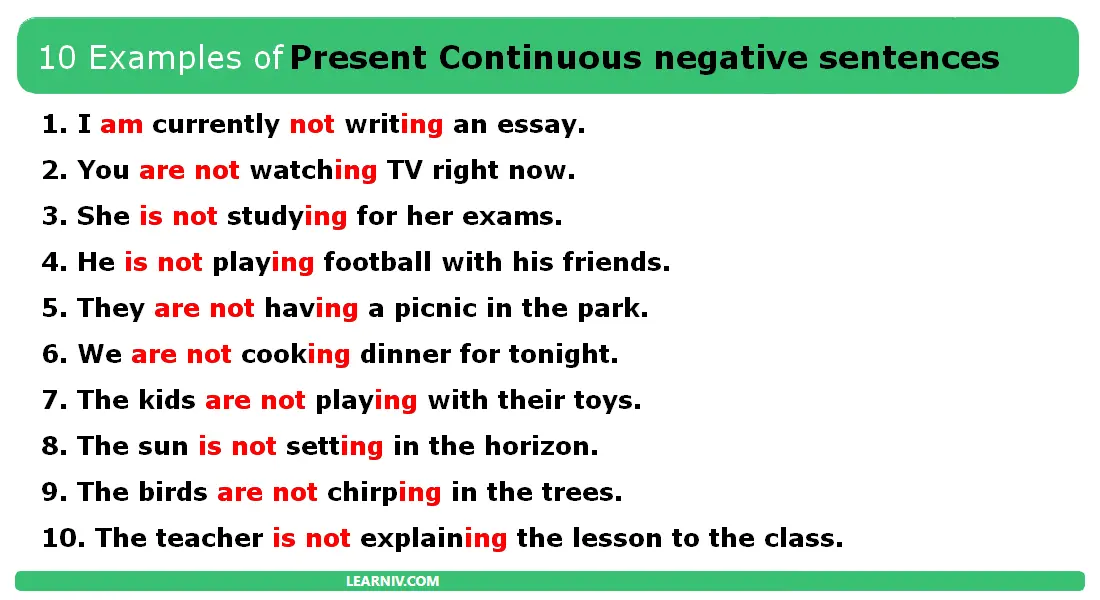
10 present continuous negative sentences
Present Continuous - Negative - Exercise | English Grammar Online ☕ Present Continuous — Negative Make negative sentences in Present Continuous. Fill in the full sentence. Show example 1. I / not / to read / now. 2. He / not / to sleep / now. 3. We / not / to watch / TV now 4. They / not / to work / now. 5. We / not / to have / fun now. 6.
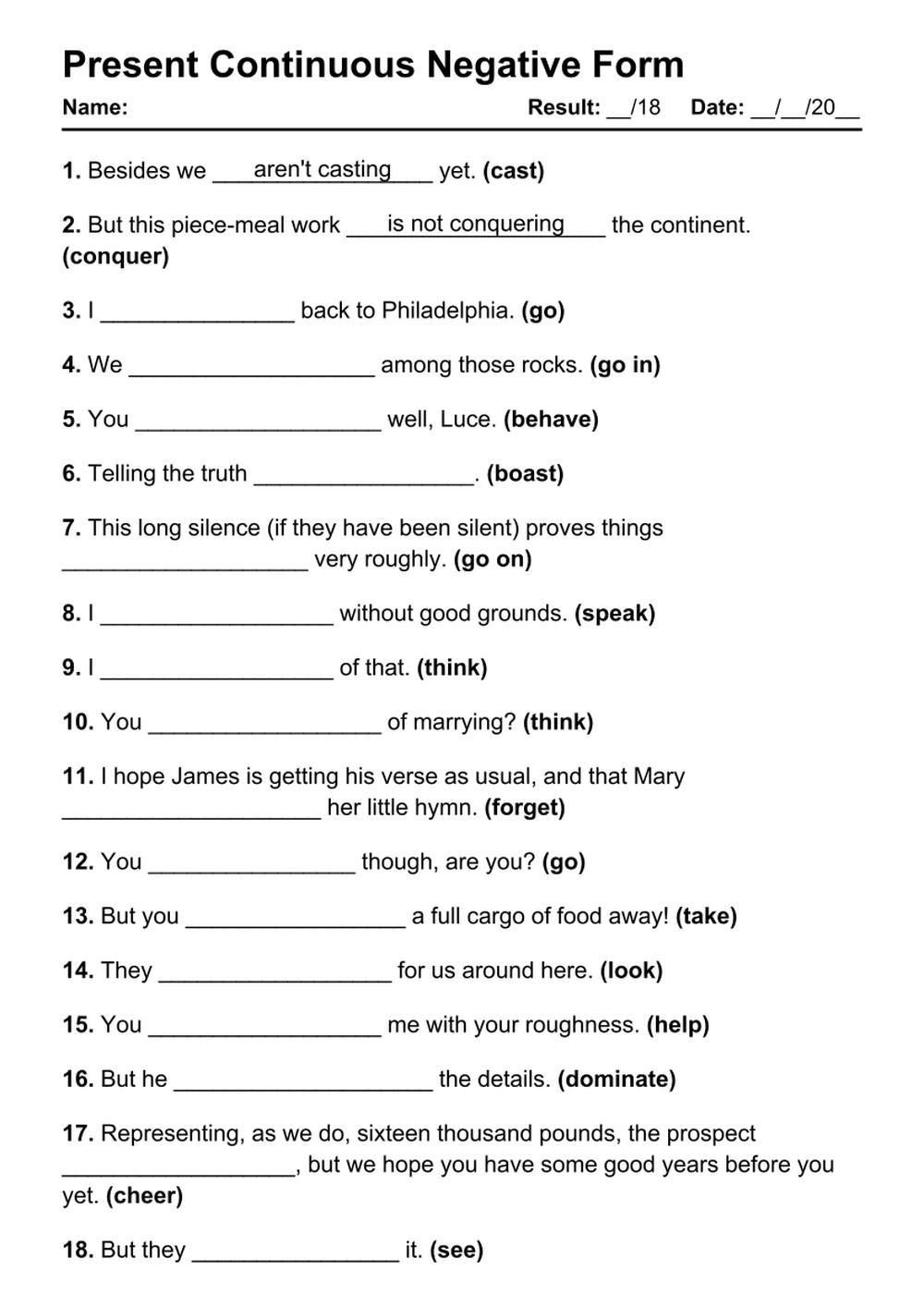
101 Printable Present Continuous Negative PDF Worksheets Grammarism
Here are some free present continuous exercise worksheets: Present Continuous Exercise 1 - Positive Present Continuous Exercise 2 - Negative All Grammar Exercises Sharing Is Caring! Practice making negative sentences using the present continuous tense with these present continuous tense exercises (aka present progressive tense).

Present Continuous 1 exercises affirmative, Negative & Interrogative Interactive worksheet
Mixed Exercise 1 Here's a present continuous exercise to practice making all forms of the tense. This is where it starts to get a little more difficult (but not very!). Make sure you can easily form the positive, negative and question automatically - this is really helpful when you don't have time to think much before you speak in English.

Present Continuous Negative Worksheet English Grammar Grammar, English grammar, English
Present progressive - exercises. To be + -ing verbs. Present continuous - exercises. Write the -ing forms. Affirmative sentences - write 1. Affirmative sentences - write 2. Negative forms - exercises. Interrogative forms - exercises. Interrogative forms - write.

Present Continuous Affirmative Negative And Questions Exercises Pdf Donna Phillip's English
A list of all the present continuous exercises to help you practise the English present continuous tense. Login; Contact; Courses; Membership;. Make the present continuous positive and negative 2 (download the PDF) Make the present continuous 'wh' and 'yes / no' questions 1.

PRESENT CONTINUOUS AFFIRMATIVE, NEG… English ESL worksheets pdf & doc
Present continuous exercises: write the affirmative, negative and interrogative forms. Present progressive. Elementary and intermediate level esl.

Pin on Present continuous worksheet
Present Progressive - Negations - Long forms - Exercise 1 Task No. 4063 Put in the verb in brackets into the gap and form negative sentences in Present Progressive. Use long forms of the auxiliaries only. Show example Do you need help? Form of the Present Progressive The children questions. (not/to ask) Nick to the gym. (not/to go)
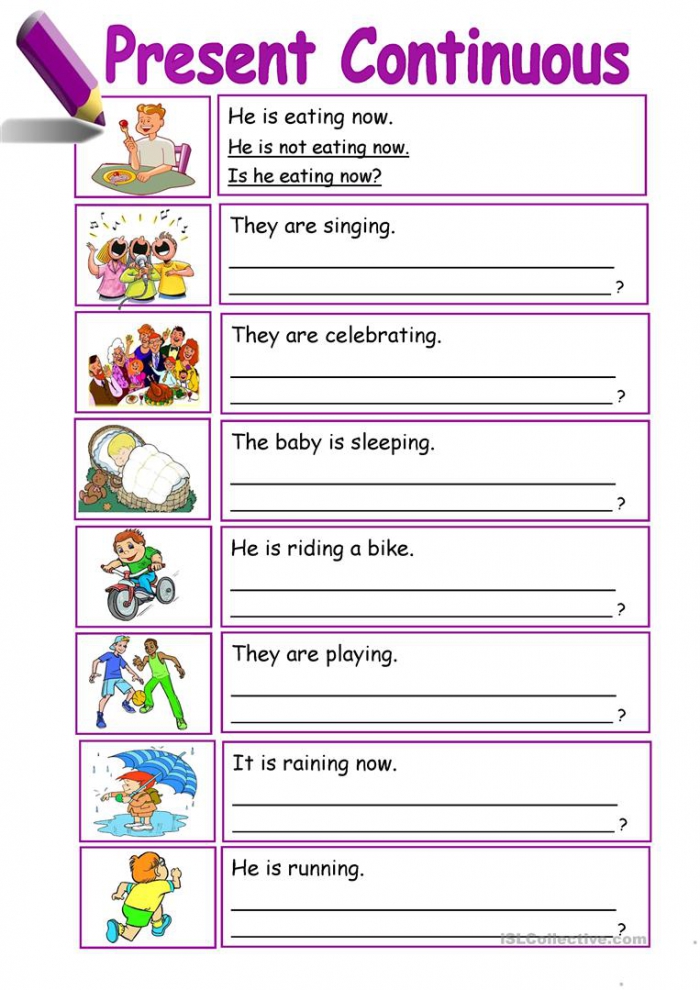
Present Continuous Worksheets WorksheetsDay
Exercise present continuous negative Exercise: negatives in present continuous. Write the negative form of present continuous using the infinitive in brackets. You can use full or contracted forms of the verb. Example: You to the shops today. (not go) Answers: You are not going to the shops today. or, You 're not going to the shops today. or,

Present Continuous Tense Exercises and Examples Affirmative Negative Question English grammar
Positive and Negative Practise making the present continuous (positive and negative forms) here - even if it seems easy, it's important to know how to make the tenses without thinking, so you can concentrate on choosing the correct tense for the situation. Type the whole sentence into the box and click 'check'.
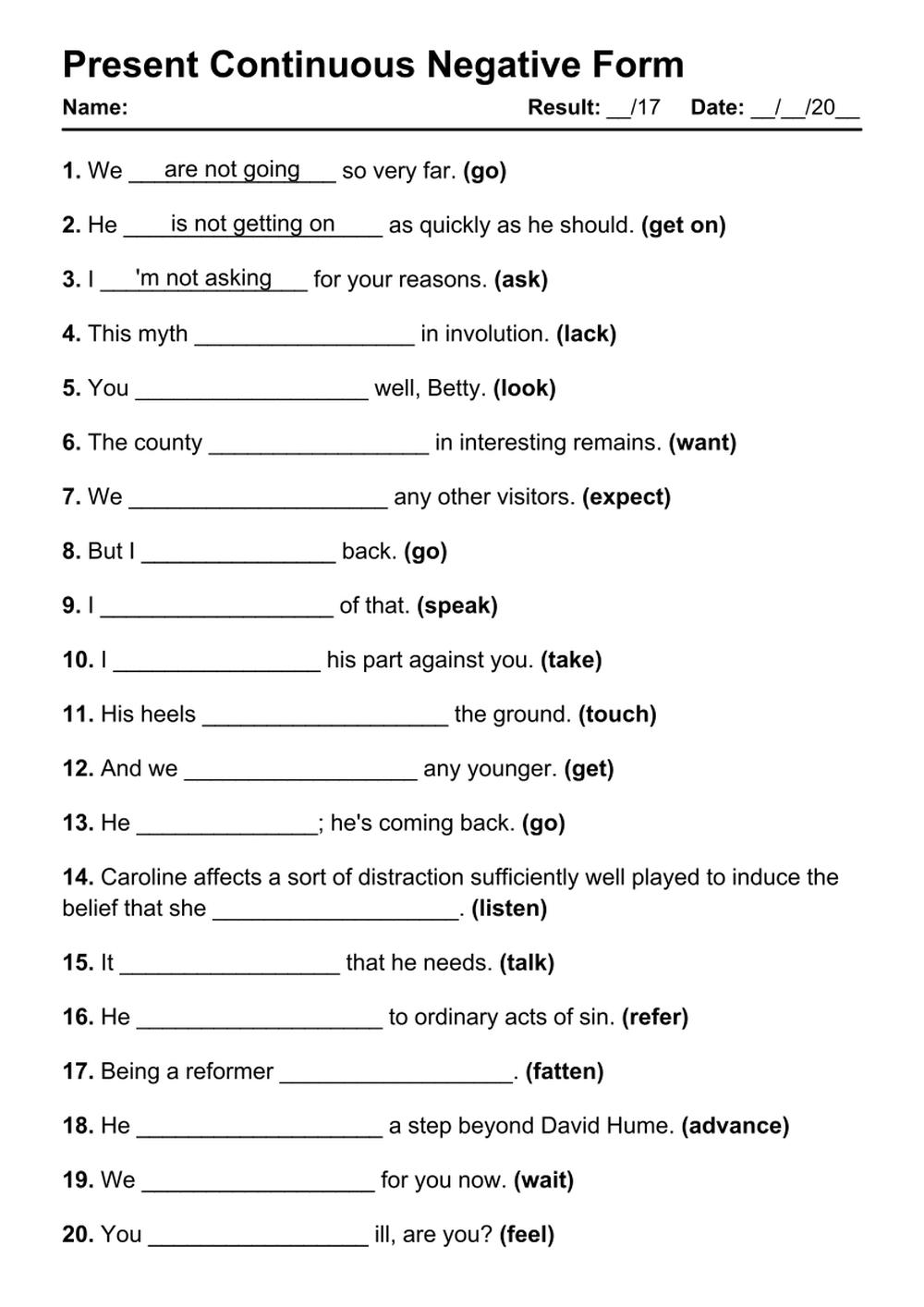
101 Printable Present Continuous Negative PDF Worksheets Grammarism
Access a collection of 101 printable PDF worksheets focusing on the English grammar topic of the present continuous negative.Download fill-in-the-blank tests with exercises and answer keys for present continuous tense negative form to print for free. The activities in the sheets are suitable for kids, adults, ESL learners at the beginner, elementary, and intermediate levels to practice English.
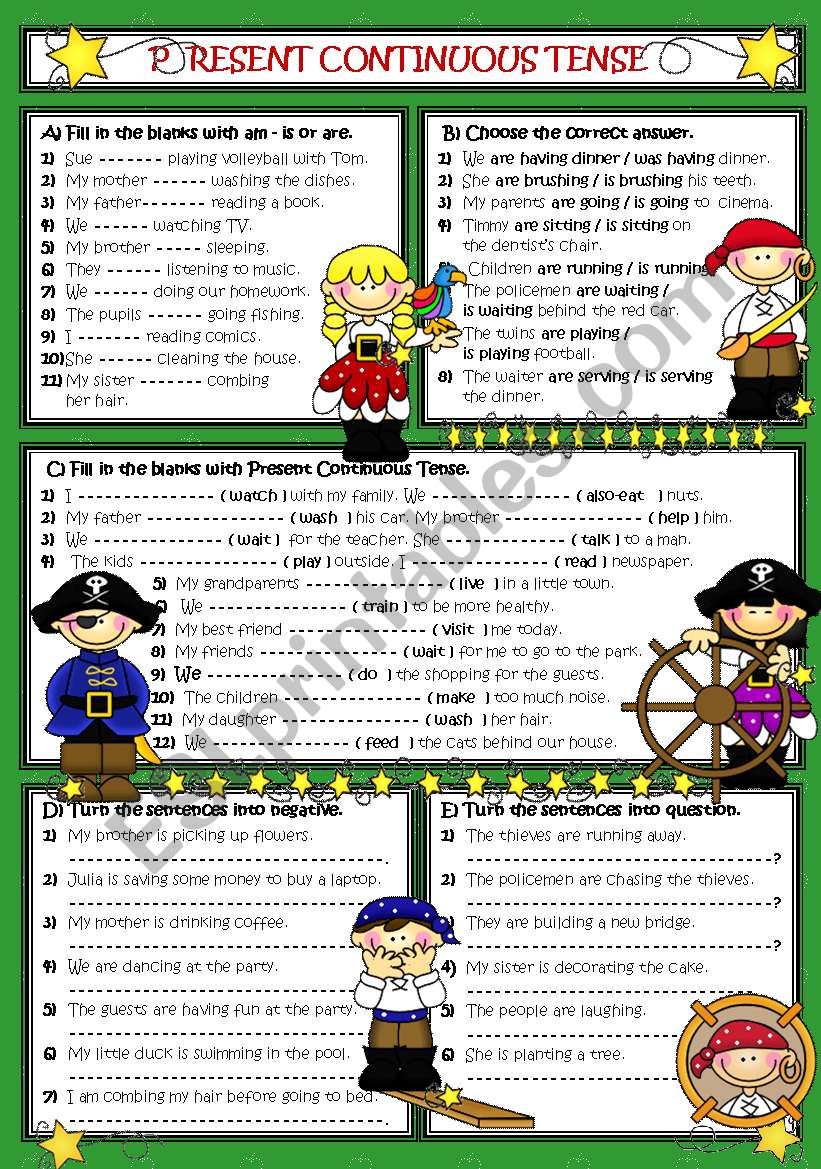
PRESENT CONTINUOUS TENSE (PositiveNegativeQuestion) (B&W included) ESL worksheet by lady_gargara
Positive and Negative Practise making the English present continuous (positive and negative forms) here. Remember, it's really important to know the verb forms inside out, so you can make the tenses without thinking. If you know how to make the tenses really well, you can concentrate only on choosing when to use them, which is more difficult.